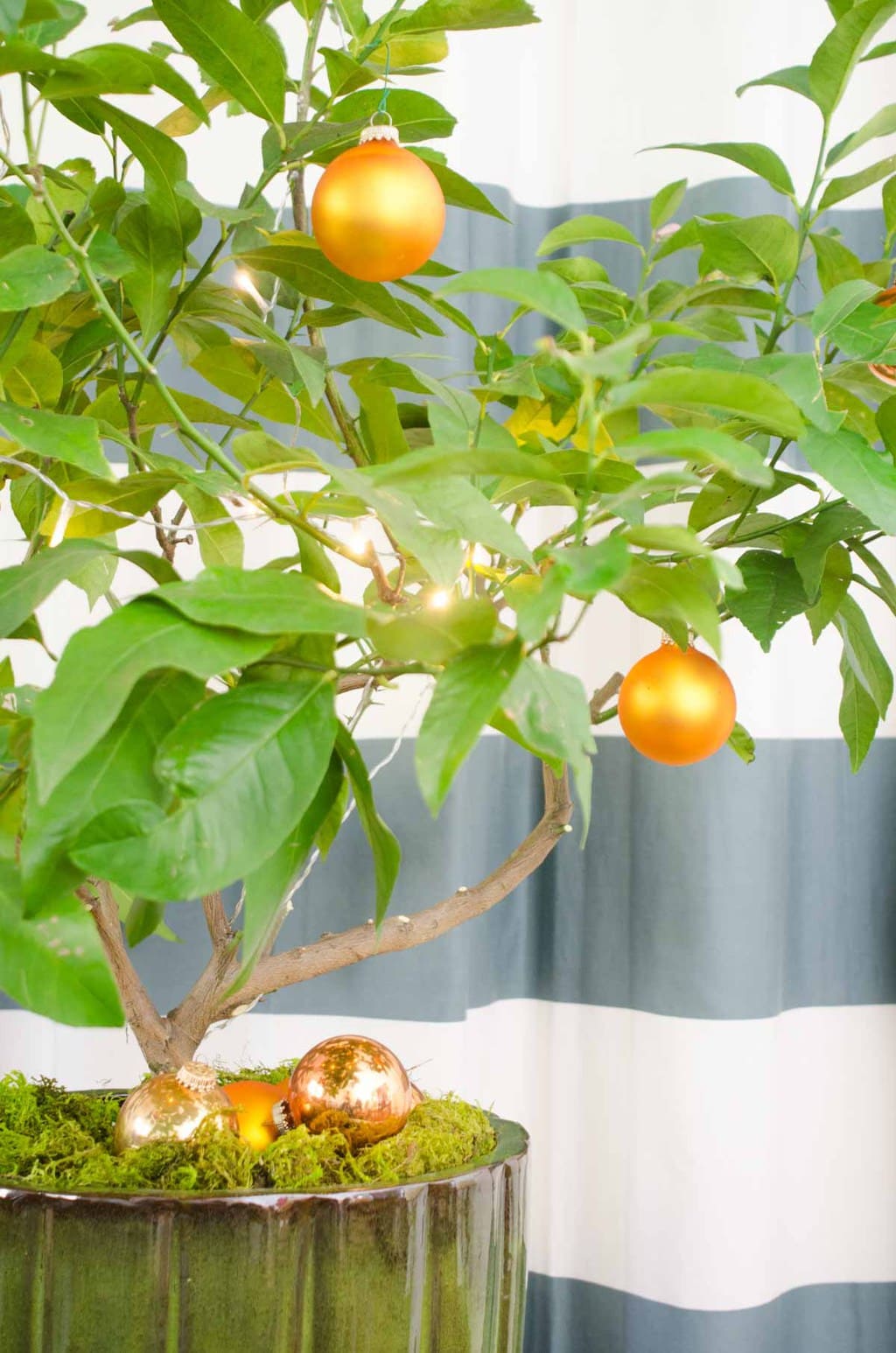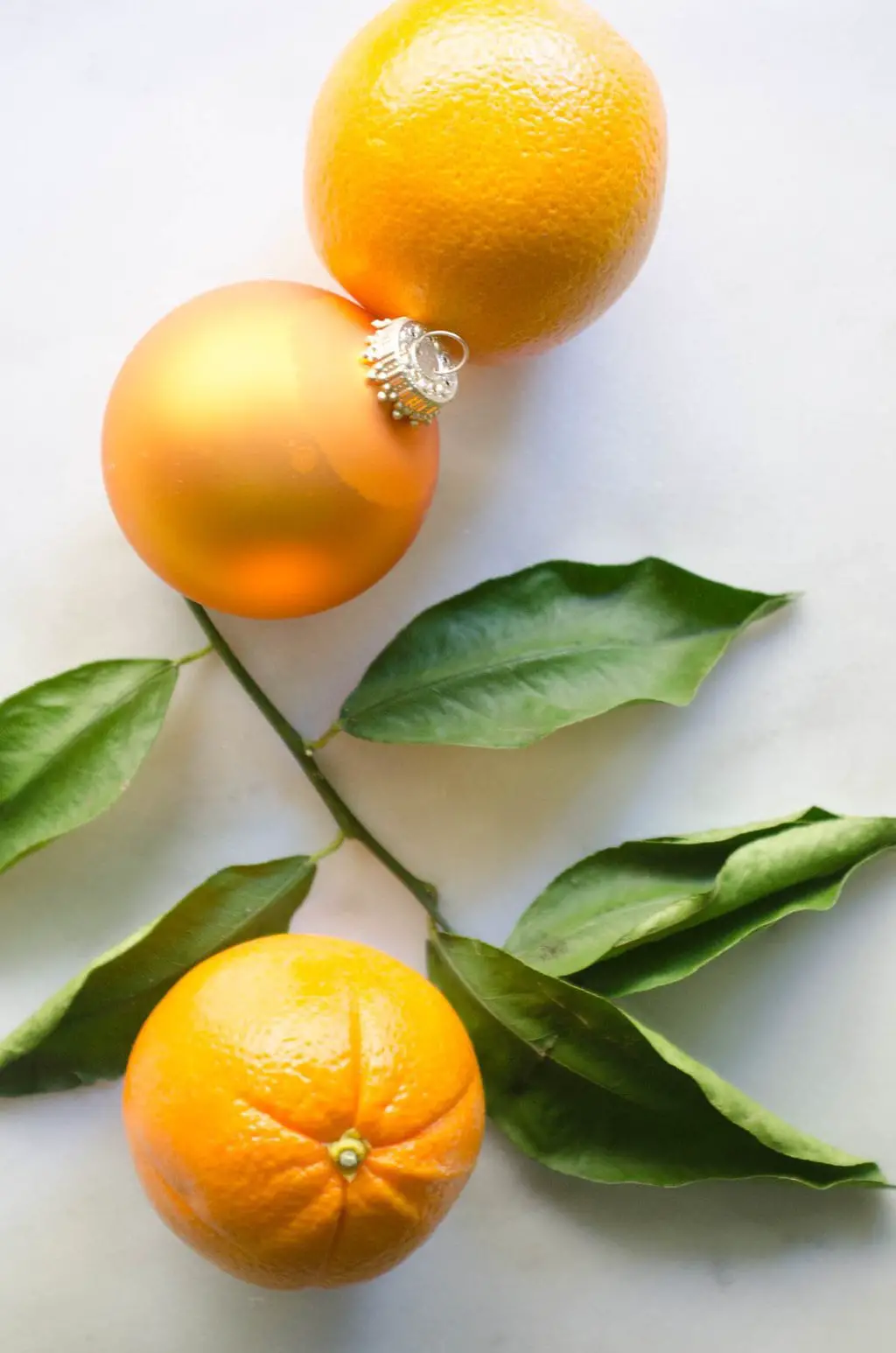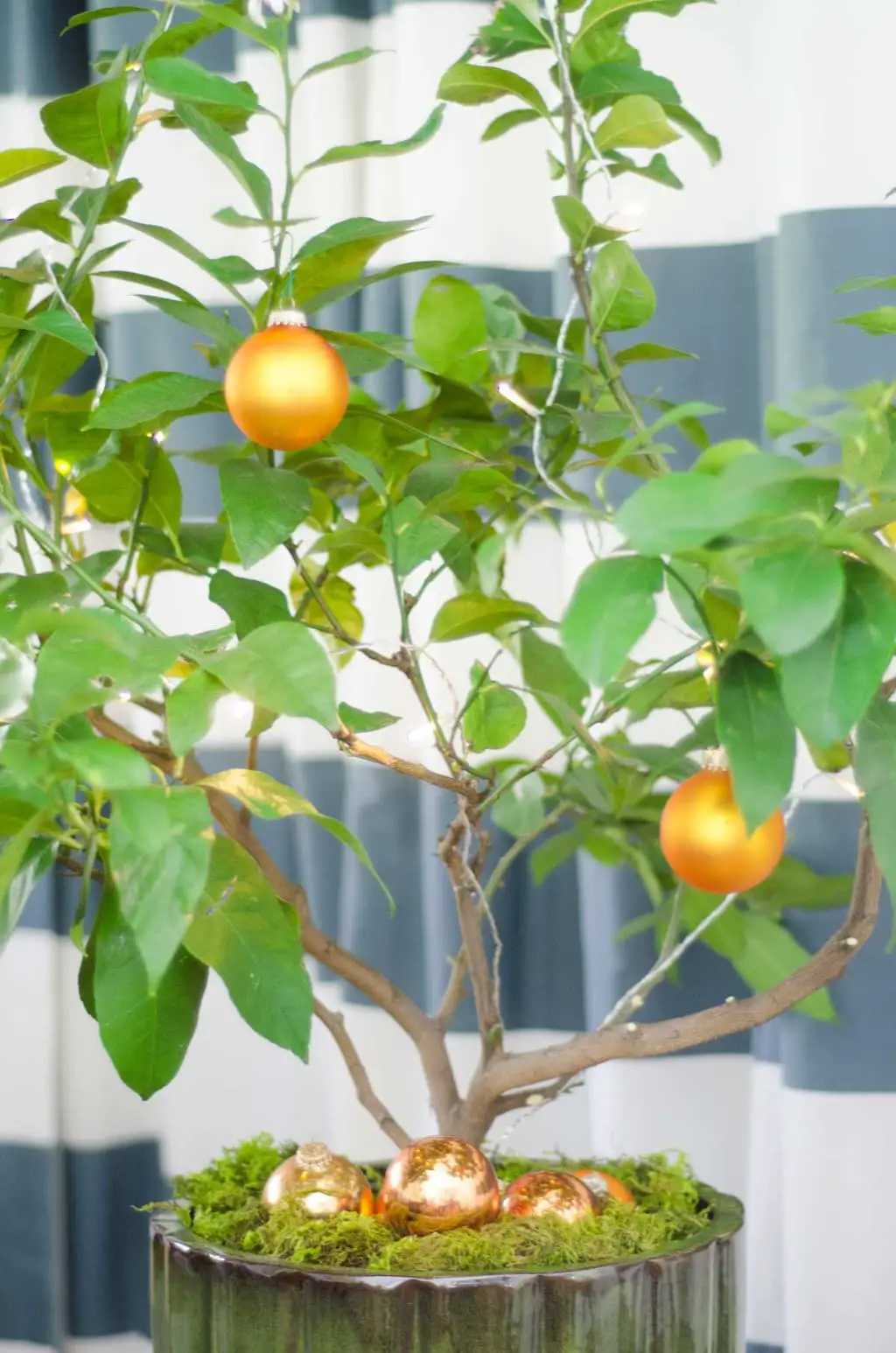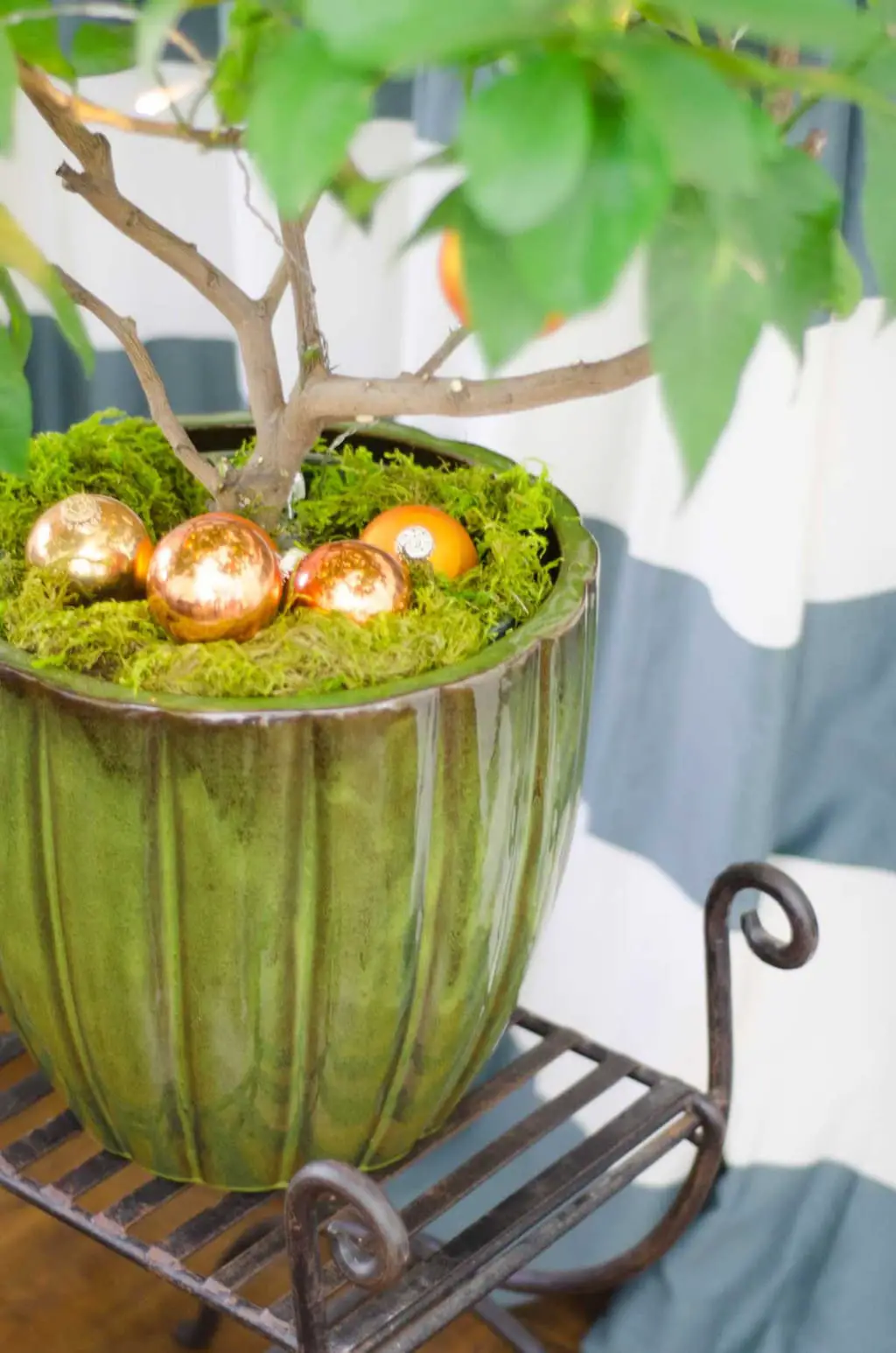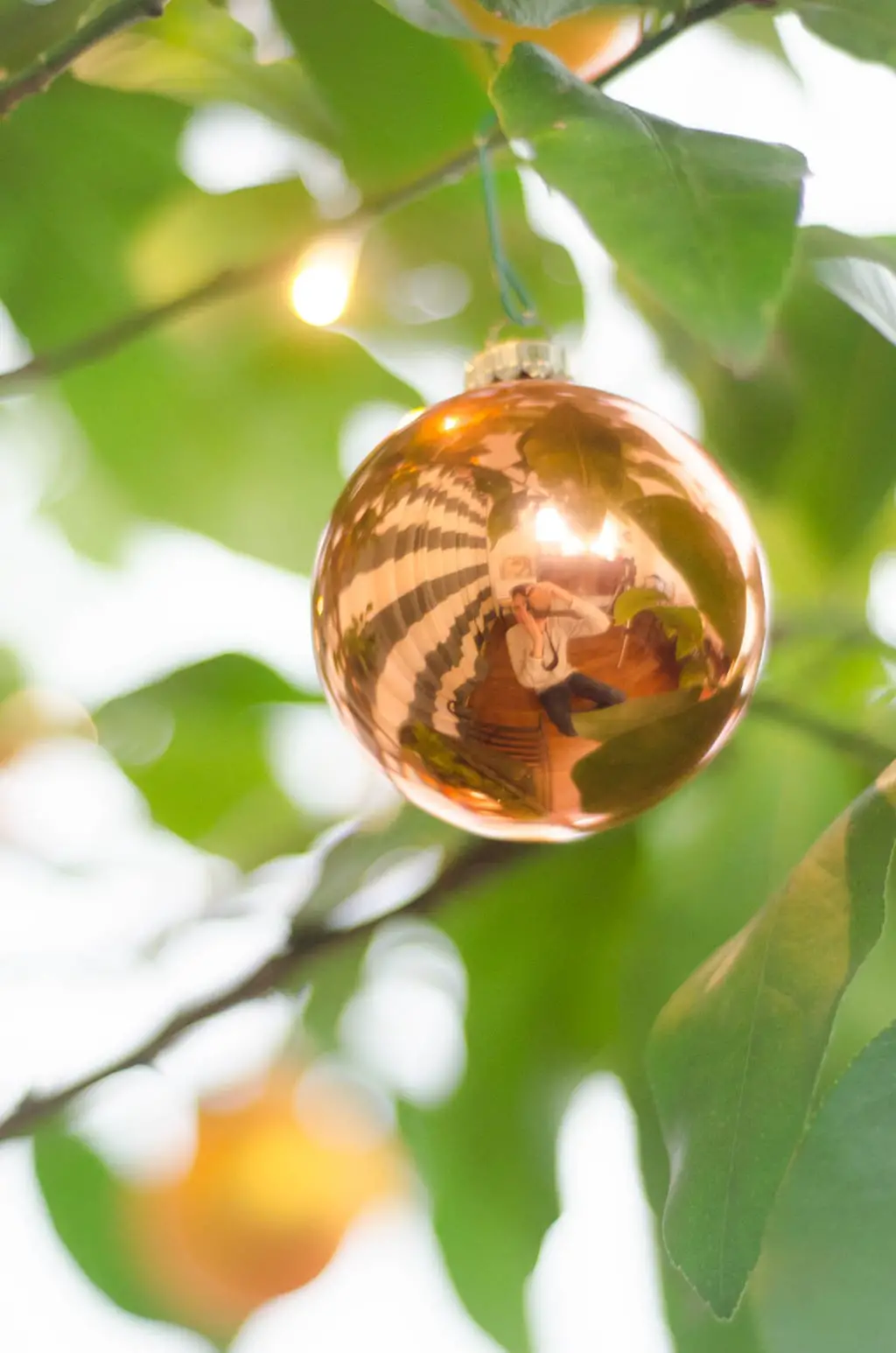When it comes to holiday decorating, it can be hard to find the perfect spot for a Christmas tree in a small living room. Although I love the nostalgic smell of pine needles, when I spotted this Monrovia meyer lemon tree at our local nursery I knew it would be just as festive as a traditional tree. And the smell it just as good – there were a couple of blossoms left on our tree that have an incredible scent. With some glass ornaments (like fruit!) and a strand of mini lights, our citrus tree looks perfectly festive, and will easily transition out of the holiday season. I used some moss to cover the top of the pot and placed a handful more ornaments at the base to give it extra sparkle. It looks beautiful in the living or dining room, and although ours is five feet tall already, we placed it on a stool to give it some more height. And when spring comes around, we can carry it out to the patio to soak up the warm sun! Not sure your green thumb will hold out until then? Keep scrolling for some pro tips from Monrovia on keeping a citrus Christmas tree thriving indoors.
- Choose a dwarf variety which prevents the tree from growing too large.
- Provide eight to 12 hours of sunlight daily such as a south-facing window with good airflow. Avoid spots near exterior doors, radiators, fireplaces, and ovens. Keep room temperature about 65ºF in winter.
- Pot up in a container with several drainage holes on the bottom and add a dish of pebbles underneath to help with air circulation. Mix 3 parts regular potting soil with 1 part small-gauge redwood or cedar shavings. Add a dose of slow-release, nitrogen-rich fertilizer, following directions on the package.
- Citrus prefer infrequent, deep watering to frequent, shallow sprinklings. Water about 1/2 gallon weekly, when the top 3 inches of soil feel dry (Unsure? Buy a moisture meter). If you live in a dry climate or have dry heat, mist leaves every few days. Fertilize with a high-nitrogen, low-phosphorus food (20-10-10) or a citrus fertilizer to keep it well-fed.
- Prune at least three times a year—April, June, and September—to increase the number of branches, thereby boosting fruit production and giving the tree good shape. Come spring, the tree can spend more time outdoors. When all threat of frost has passed, slowly acclimate your citrus tree to its new outdoor home by first placing in a part-shade location. After a few weeks, move to a protected location in full sun with good airflow.
- In general, most lemons and limes will ripen in six to nine months, and oranges will be ready to harvest in about a year. Citrus fruits ripen only on the tree, and when ready, many varieties may be harvested over a period of weeks or even months. Once the fruit has reached its full color, test for ripeness by applying a bit of pressure to the rind. A slight softening indicates your citrus is ready to pick. Next step: get cooking!
This post is sponsored by Monrovia, but all text, images, and opinions are my own. Thank you for supporting the brands that keep Thou Swell running!
